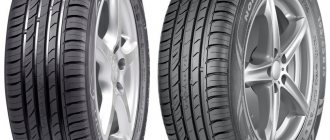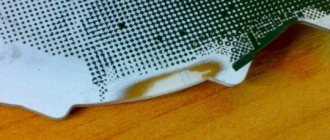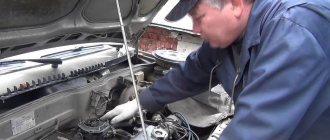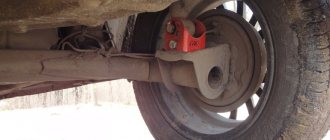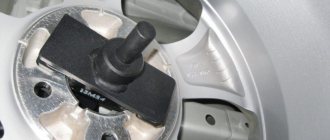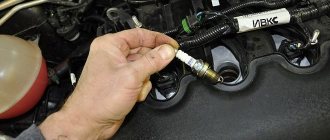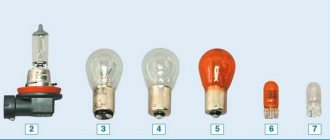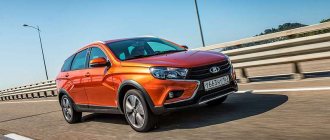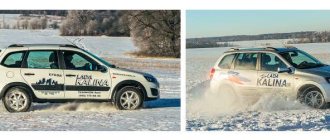“Huge mountains of slag almost in the city itself”
The children had a good time on this trip. We learned to lure them, and every 200 kilometers we made sure to stop to walk around and warm up. Before the Urals, we had cities every day. So we walked some of the time and drove some of the time. In the morning we already started to see the city and explore the sights.
E: In the cities we split up: one went to photograph the sights, and the other went with the children to the playground or children's park.
N: After Ufa we went to Yekaterinburg through small Ural towns. Among the first was Miass, where Urals are assembled.
Next comes Zlatoust, Karabash - the dirtiest city in Russia and the planet until 2000. There was the Karabashmed enterprise, there was acid rain, the vegetation almost disappeared. Although locals say that it has become cleaner now, it still looks sad. You approach the city, and all around are scorched Martian landscapes. The street in front of the enterprise is completely uninhabited; everyone has moved out.
Afterwards we stayed with friends in Upper Ufaley for two days. They gave us excursions to the lakes and mountains. In addition, we visited nickel mines. Huge mountains of slag almost in the city itself look depressing.
E: In general, in the Urals there are many urban landscapes where pipes stick out right in the middle of the city and smoke.
N: In Yekaterinburg we looked at the city itself and the nearby gold mines. Then we got to Tyumen - this is the first city that impressed me with its cleanliness and, let’s say, “niceness.” The embankment there is especially steep.
In Omsk we wanted to swim in the Irtysh, but the locals dissuaded us, saying that the river was dirty. So we just took a walk and looked at the monument to Kolchak.
We stopped in Novosibirsk for a couple of days. This is the third largest city in Russia, but at the same time one of the youngest - 140 years old. To be honest, overall there is nothing to watch. But there is an academic town, a large railway museum, the Ob Sea - that’s where we stayed. This was the only place in Siberia where we did not find mosquitoes. But there were so many midges that they simply couldn’t talk!
Then we headed towards Barnaul and Biysk.
Self care kit
The train is not a beauty salon, and there is neither a bathroom nor a shower, but every passenger does not forget about the simplest cosmetic and hygiene products:
- wet and paper napkins;
- deodorant;
- mirror;
- toothpaste and brush;
- a bar of soap;
- handkerchief;
- towel;
- toilet paper;
- hair brush.
Men certainly take with them everything they need for shaving, and girls and women take a whole range of cosmetics and products.
Traveling with children
When traveling with children, parents should be prepared for inevitable inconveniences. Adults should be guided by the list of necessary items and things that will make the trip easier:
- sketchbook;
- baby food;
- toys;
- oilcloth;
- diapers;
- player;
- diaper;
- educational games;
- collapsible pot or with lid;
- pacifier;
- felt-tip pen or pencil;
- chocolate and sweets.
The list depends on the child’s gender, age, preferences, temperament and character.
“Gluttony” LADA Vesta
A trip on vacation along the Arkhangelsk-Yeysk route and back, as well as using a car to travel on vacation “turned out” to 6,000 km of mileage and increased fuel consumption:
“On the highway at an average speed of 80 km/h without air conditioning 7.3 liters, with air conditioning 7.8 liters. In the city, the average speed is 19 km/h, with air conditioning 13 l. This is too much for a 1.6 engine,” notes the owner.
The 1.8-liter Vesta has an even higher appetite, so a trip to the sea under its own power can cost a pretty penny.
"Jerky" motor
The VAZ engine is very twitchy, notes the Vesta owner. The unit creates strong vibration, especially in traffic jams and with the air conditioning on:
“This twitching at the bottom is annoying. I decided that if I don’t sell Vesta, I will reflash it.”
Photo: LADA Vesta - exterior in profile and rear, source: LADA and novayalada.ru
Among other inconveniences, which, nevertheless, I managed to get used to, the driver about the gearbox, the “boom” of the suspension on a shallow comb and the sound of the windows.
Among the advantages of the car, Russian car enthusiasts highlight the spacious interior, fairly high ground clearance and rich options for reasonable money. The price tag for LADA Vesta today starts from 654 thousand rubles. For the top version they will ask 974 thousand rubles.
Train wardrobe
Travel takes place both in the warm summer months and in the frosty winter. Therefore, from the recommended list of clothing you should take what is suitable for a specific season and category of train:
- trousers - regular or sports;
- turtleneck;
- jeans – not made of too hard fabric;
- sneakers or sneakers (inexpensive);
- shoes (light);
- shirt;
- socks – replaceable;
- sandals;
- sweater;
- slippers;
- T-shirt;
- flip-flops;
- shorts.
Diary of an orange viburnum. Issue #5: problems with the “attic”
Hello. I am Lada Kalina, nicknamed “Ryzhik”, and you are reading my diary. You read it in the fall, and autumn is the time to take stock. Therefore, it would be useful to remember what we talked about in previous episodes.
Issue #1: introduction
Issue #2: treatment of childhood diseases
Issue #3: spiritual bonds
Issue #4: life after an accident
More than a month and a half has passed since the fourth issue. There are about 11,000 kilometers on the odometer, and I clocked up a little more than 4,000 of them on a trip from Tolyatti to Crimea and back. What can I say, it was fun.
The morning loading of luggage smoothly turned into the afternoon, so we started almost at noon. The “four in the car, not counting the dog” scheme turned out to be quite working - people with personal belongings in small bags sat in the cabin, a dog occupied the trunk, decorously leaning on a suitcase with canned dog food, and all the rest of the luggage fit into the box - in addition to the suitcase and a large bag A lot of things fit in there, including a five-liter gas can, a bag of fruit and - attention! - guitar. The owner stuffed it on top of all his things literally at the last moment, probably expecting to sit on the shore on long summer evenings and romantically pluck the strings upon his arrival at the seaside. Not so...
We covered the first hundred kilometers casually, without incident. Then the sound of the flowing air changed slightly, however, no one noticed it. And a little later Largus caught up with us, behind the wheel of which sat a man energetically pointing upward. “It started about two kilometers ago, a couple of rugs, two umbrellas, some kind of bag with apples, it seems, flew away…” he said when we stopped. The man didn’t see the guitar - probably because it flew away first from the opened box. By the way, she was never found later. The laptop, which for some reason also ended up on top, miraculously caught on the rear support of the box lid and therefore was not blown away by the wind under the wheels of some KAMAZ truck. Or in the “lobovukha” of Oka.
In general, there were no casualties or shocks, except for the feeling of sudden parting with the guitar that gripped the travelers. The box opened at a speed of about 100 km/h - apparently as a result of air entering through the front part along the parting line, which tore the lid off the flimsy lock, as it turned out. The owner, returning from an unsuccessful search for the guitar, bought tape from a nearby store (an unscheduled pit stop occurred in a populated area) and covered the front part of the box along the parting line with it to prevent air from “blowing” inside. To be sure, the box was intercepted across with a piece of rope, and we moved on. At one of the stops, we tried to do without tape, and everything went according to a familiar scenario - at a speed of about 100, the lock could not stand it, and only the rope prevented the “automatic” raising of the roof.
All these adventures threw us off our schedule quite a bit - we didn’t cover even 700 kilometers before nightfall and spent the night in a nice place called “Quiet Harbor” near Mountain Balykley, at the last moment noticing the “overnight” sign emerging from the darkness. An overnight stay on the shore of the Volga Bay in a house with amenities costs 2,000 rubles, the house can accommodate five people - however, the dog had to spend the night on the porch - but I got a passage between the buildings that was quite suitable for parking. The cafe here is open from seven in the morning, so at 8:00 the next day, after a quick breakfast, the team moved on.
On the second day of the journey, the movement without incident also did not last long. Turning around on the side of the road after a stop, the owner managed to drive me with the rear wheels into a ditch, defiantly hanging the front ones. Luckily for us, fellow countrymen, literally neighbors (!), a young family living a couple of kilometers from us in Tolyatti, also driving a Kalina station wagon, stopped on the same side of the road. They surprisingly quickly pulled me out of the ditch, wished us good luck, and we moved on.
In general, these and other (much less significant, but still) delays on the way led to the fact that on the second day we had to try pretty hard to get to the place. In terms of mileage, again, it wasn’t too much – about 1,050 kilometers – but the same cannot be said about the time: we spent almost a day on the road. In terms of the quality of roads, the “mainland” part of the trip, which ran along the route Tolyatti – Saratov – Volgograd – Rostov-on-Don – Temryuk – Ilyich, turned out to be quite calm, without very broken down sections and serious repairs.
There were also no difficulties on the ferry crossing from the Kavkaz station to the Crimea station - paperwork and buying tickets took ten minutes (you can go through the procedure even faster by purchasing a ticket in advance on the gosparom.ru website), the crossing itself took another thirty minutes. And on the Crimean side, already late at night, fog awaited us. We had to “walk” the last hundred kilometers to the village of Beregovoe (near Feodosia), where rest awaited us, in the dark and in thick fog - this only happens at sea, when the water is warmer than the air.
The quality of the asphalt also added to the fun - the roads in Kerch and on the highway to Feodosia are noticeably different from those we are used to when getting to Crimea, and in the new, Russian era, the Crimeans have yet to repair them. However, later we became convinced that road work on the peninsula was already underway - for example, on the same highway, but further, on the Feodosia-Simferopol section. And the serpentine road on the Feodosia-Ordzhonikidze-Koktebel section amazes with the almost European quality of asphalt.
Well, then everything was natural. While people and a dog were splashing in the sea on a clean and almost deserted beach, I stood quietly in the shady courtyard of the guest house “Bohemia” (if you are in those places, book a room there - a very comfortable house, polite staff and delicious food - note from the owner ), resting after a serious journey. But there were also two mini-trips around Crimea: one to Simferopol with a return to Beregovoe, and the second along the route Feodosia (Beregovoe) - Ordzhonikidze - Koktebel - Feodosia. The route is pleasant, with good asphalt, interesting serpentine roads and a huge number of stunning views - both mountain and sea. One “but” - be careful on the beach in Ordzhonikidze: local crooks open cars and take away money and valuables, and Dodge, who was standing next to me, was unlucky. It’s better to leave your car with friends or in a guarded parking lot, because the beautiful seaside village itself, lost between the hills, is definitely worth a visit.
On the way from the peninsula, we barely had time to cross before the storm - immediately after us the ferry began to operate in “actual weather”, which could mean a delay of many hours. Otherwise, it was a calm, pleasant trip - it was a return home. My salon, trunk and roof box were filled with hotels, gifts, souvenirs, fruits and good impressions. Late at night on the second day of our journey, we stopped in our home yard in Togliatti.
By the way, about the roof box. Upon returning, the owner was seriously going to quarrel with the guys who sold us the box - no joke, because of a weak lock, you could lose your favorite guitar! And in general, it’s a miracle that the flying things didn’t hit anyone. However, she showed enviable conscientiousness - it turns out that our case was not an isolated one, and they began working with clients who, like us, suffered due to the delivery of a low-quality unit - that is, a lock. A company representative called himself and invited us to the installation center to replace our “attic” with a model with an improved lock.
1 / 2
2 / 2
The box that you see in the photo is an exclusive design that demonstrates the capabilities of the guys from PT-Group. And the standard range consists of black, white and gray colors, matte and glossy options are possible. But the most important thing is the castle. Now, instead of a completely disastrous solution with one locking point, a mechanism generally accepted in such cases with two rods is used, which actually locks the entire sidewall of the box. In addition to this, all boxes are now equipped with straps that are used to secure luggage inside. We carried out tests - neither at high speeds, nor on bumpy country roads, we were unable to “open” the updated box, piled up to the ceiling with heavy bags.
1 / 4
2 / 4
3 / 4
4 / 4
In addition, a spoiler was installed on the trunk door, which does a good job of protecting the rear window from contamination, and a trim was installed on the rear bumper, which came in very handy due to the fact that the dog constantly knocks on the bumper with its claws. The roof rack has been replaced - instead of the most “budget” option, it now costs more, but the crossbars have an aerodynamic profile and make less noise on the move, and the attachments to the roof rails are more reliable and convenient. All additional equipment is also from PT-Group.
1 / 4
2 / 4
3 / 4
4 / 4
So overall, everything is great. I didn’t have the slightest problem with my “health” - neither during the summer trip (except for the valve on one of the wheels that began to “poison” and therefore was replaced), nor later. And why should I “be sick” - I’m a normal car in the prime of life. The time for the first maintenance and winter is approaching... But you know what?
I didn’t have the slightest problem with my “health” - neither during the summer trip (except for the valve on one of the wheels that began to “poison” and therefore was replaced), nor later. And why should I “be sick” - I’m a normal car in the prime of life. The time for the first maintenance and winter is approaching... But you know what?
It was a great summer - even if some people had problems with the attic. That’s why it’s summer, a time of mild madness. And this is the very moment at which the story should end. Not mine - mine continues - but the story of this diary.
But maybe someday there will be a reason to start a new one.
Car: Lada Kalina, station wagon, 98 hp, automatic transmission, luxury package. Mileage: 11,000 kilometers
Troubles:
- on the way to Crimea, a box on the roof opened (of course, this is not a complaint about the car);
- periodic creaking of the lining in the trunk.
Amenities:
- the car comfortably transported a family of four and a dog to Crimea and brought it back;
- Fuel consumption dropped to a stable 10.5 l/100 km in the city (air conditioning on).
“I expected Moscow to be bigger”
We specially prepared the car for the trip, installed gas equipment - it cost $380, and of course we were removed from the warranty. Gas in Russia is much cheaper than here, in some places even up to 50 percent. This allowed significant savings on fuel. The cylinder was installed instead of the spare wheel, and the wheel was hung on a bracket at the back. Now we have removed it so that the door does not sag.
Plus, we bought two large boxes, imitation Thule, especially for this purpose. This made it possible to increase the trunk by almost 1000 liters. We only put light things like tents or blankets in the boxes. Pots, a barbecue, a stove, gas for it - it was all in the main trunk, so as not to create unnecessary pressure on the roof.
Elena (E): Although the boxes are budget, they fully justified themselves. Two boxes cost a total of $450. There were no problems, although once we hit them very hard.
N: We left on June 15th. I have never been to Moscow, and my wife was there when I was 13-14 years old. And we have good friends living there, who gladly invited us and arranged a two-day tour of the city. We specially timed our entry to avoid traffic jams; it was the weekend. We saw a lot, including Red Square - by the way, there are more Chinese there than locals. Moscow surprised me in that it was as spacious as Minsk, but I expected it to be larger.
Then we drove along the Golden Ring of Russia in about a week, two cities a day - the distances are short, up to 100 kilometers between them. By that time we had already covered about 1000 kilometers.
Nizhny Novgorod, Kazan - already 2000 kilometers behind.
Then there were Yoshkar-Ola and Cheboksary - small but authentic cities.
Near Naberezhnye Chelny we met the Dakar KAMAZ team. They were just driving two cars to the Silk Road. They passed us twice, we barely caught up with them, and only because they stopped to smoke. We calmly drove 100-120 kilometers per hour.
In Ufa we had our first overnight stay in a car. Before this, we spent the night in tents near lakes and rivers - the summer allowed this, it was very warm. The first rain caught us in Ufa, and at the same time we crossed the first time zone there - we gained two hours.
Total
There is nothing complicated in preparing a car for a long trip. It is enough to carry out unscheduled maintenance of units and components, change the oil and filter if necessary, and also fulfill a number of conditions:
- Inspect the wheels for wear and proper pressure.
- Replace consumables whose lifespan is coming to an end.
- Check the air conditioner.
- Carry out diagnostics of the cooling system.
- Make sure that the light signaling and lighting are functioning correctly.
- Change wipers.
- Top up the washer fluid.
Be sure to take with you a minimum set of tools and spare parts. Essential items should also include maps and a navigation device, a smartphone charger and a pocket jump starter. A small first aid kit containing a set of effective medications is also in place.
